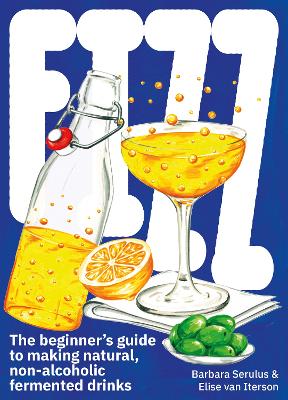Reviewed by annieb123 on
FIZZ is a tutorial and recipe guide to fermented non-alcoholic drinks. Released 7th April 2020 by BIS, it's 160 pages and available in paperback format.
This is a surprisingly comprehensive book and full of background information about the drinks covered. During the lockdown part of the current pandemic, it seemed as though everyone I knew was learning to make kombucha and fermented breads. This book fits right into the skill building - self sufficiency - home hobby genre. Kombucha is indeed contained here in a really solid tutorial chapter, along with several kefirs, ginger beer, a couple of different kvasses, mead, and tepache. An additional chapter at the end of the book includes a number of mixed cocktails utilizing the non-alcoholic brews in the book.
The intro chapter includes a layman accessible explanation of fermentation, process, tools and ingredients, and hygiene and cleanliness. The following drink chapters include the necessary info to brew and enjoy non-alcoholic drinks at home.
Recipes contain ingredients in a bullet point list in a sidebar. Measurements are given in standard metric (ml, grams, etc), followed by step by step instructions. Alternative brewing methods or ingredients are listed after the main/classic recipe along with serving suggestions. There are no photos, but the book is enhanced by the addition of whimsically colorful illustrations.
Well written and presented, this would make a superlative gift choice, library selection, or a fine addition to the homebrewer's library.
Four stars.
Disclosure: I received an ARC at no cost from the author/publisher for review purposes.
Reading updates
- Started reading
- 20 October, 2020: Finished reading
- 20 October, 2020: Reviewed
